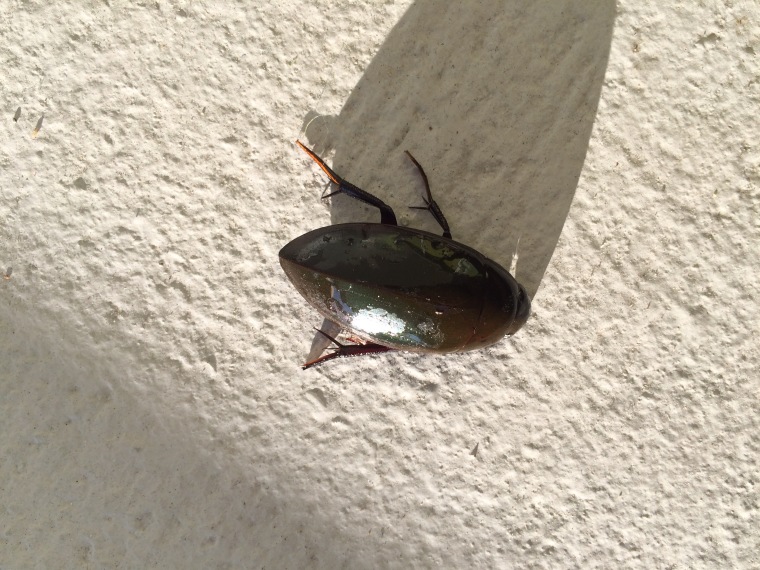We recently returned to the Briones bullfrog pond, one of our favorite wild places. After an hour wading in waist- (or even neck-deep!) water, sweeping with a variety of nets, we caught and studied a number of different frogs — Rana catesbeiana and Hyla regilla — and their tadpoles, plus the juvenile forms of Taricha torosa newts. And we caught several enormous aquatic beetles, Hydrophilus triangularis, probably the biggest water beetle in California, larger even than Dytiscus marginicollis.
Unlike Dytiscus, which is purely predatory, Hydrophilus triangularis is a “water scavenger beetle” with a more catholic, omnivorous diet. Its larva, though, is a fierce predator, and attacks mosquito larvae in ponds and other stagnant bodies of water. Though its body and legs are adapted for swimming, it isn’t very agile when walking, although it’s a very strong flier and is sometimes attracted to lights at night.
H. triangularis appears black when you first see it in your net, or darting through the water (they rise to the surface to capture a bubble of air around their abdomen, beneath the elytra, or wing covers), but if you look more closely, in the right light, you’ll see that it has a lovely, greenish sheen.
The bullfrog pond is quite deep after our recent wet winter and soaking spring, and it has an unusual ring of tall reeds and rushes round it, in which several noisy red-winged blackbirds hang out and chatter.

The bullfrog pond is ringed by much more green growth — tall reeds and rushes — than in past years.

Hydrophilus triangularis has a sleek, streamlined body and legs adapted for swimming. It appears black at first sight…

Seen in the right light, though, Hydrophilus triangularis shows a beautiful green sheen.
